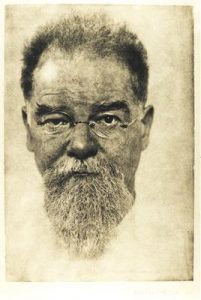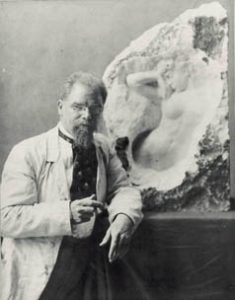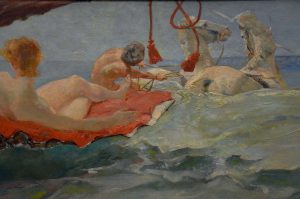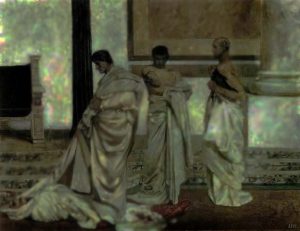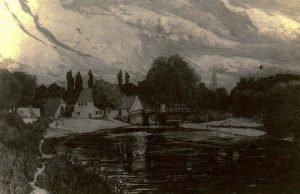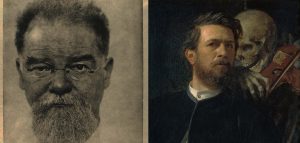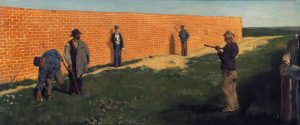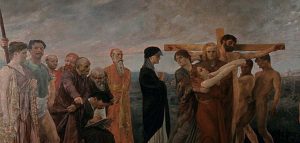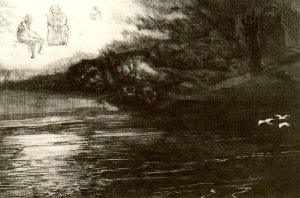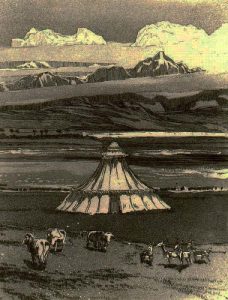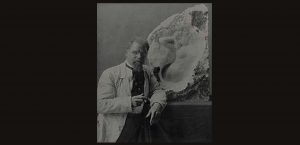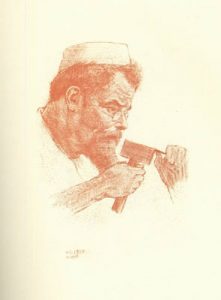Max Klinger was born on February 18 in 1857 in Leipzig, the Kingdom of Saxony.
1857 - 1920
Max Klinger
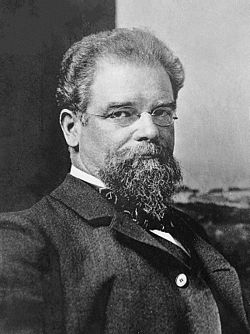
description
German artist, graphic artist, sculptor, engraver and architect. He worked in the styles of historical Romanticism, Symbolism and Early modern.
In 1892, he became one of the founders of the influential “Society of Berlin Artists”, organized exhibitions. He was a member of the Munich Secession, a member of the newly formed Viennese Secession and a professor of the Academy of Fine Arts in Leipzig (since 1897), an honorary member of the Stockholm Academy, had the title of Knight of the Order Pour le merite.
A real sensation was the early cycles of 1878 on the theme of the deeds of Christ and Fantasy about the glove. M. Klinger called the depicted “cycles” (events with imaginary fantastic and symbolic realities) “opuses”, equating them to musical works.
In treatise “Painting and Drawing”, which was published in 1891, the author gives an independent meaning to the depiction of the fantastic external world. At the same time, Klinger believed that it was peculiar to the graphics to express such scenes most clearly. Fantasy (a painted story) about the glove is rightly defined by experts as the first Surrealist work. The graphic cycle of “Drama”, depicting the revolution of 1848 and the tragedy of the urban “bottom,” outlines the line of Social Expressionism.
M. Klinger’s contribution to sculpture was also original: trying to revive the technique of polychrome plastics, he used various marbles, ivory and gold, bronze and painted alabaster.
According to the figurative definition of art, Klinger was “from the family of Durer and Holbein.” This is a mournful thoughtfulness, a dramatic pathos, and a contemplative dream. His symbols always embody great feelings and great thoughts.
A House-Museum was opened in the artists hometown.
Key ideas:
– M. Klinger considered the combination of painting, plastic and architecture his main idea in art. At the same time, in his work, the master combined a keen interest in vital social problems with mysticism and fantasy.
– In the 1880s, being carried away by Symbolism, the German artist began to «fill up» the paintings with allegorical, fantastic creatures, “Becklin” mermaids. The external and internal worlds equally aroused the interest of the master; he saw and depicted them as opposites.
– Later, the so-called “conservative” modernity prevailed in the paintings by Klinger, when the signs of the traditional academic picture (“The Court of Paris”) remain in the composition full of poetic and sometimes over-complicated fantasy.
– Painting, according to the master, is a means that “keeps the outside world”, and fantasy “can only be expressed in drawing and engraving.” Thus, painting for him remained a positive method of self-expression. Sometimes Klinger created frames with complex symbolic reliefs by himself.
– Graphics, which took a great place in the work of Klinger, conveys the dark aspects of life and sometimes demonic phenomena. They are adequately expressed in a contrasting linear manner, which the artist perfectly mastered.
– Working as a sculptor, Klinger revived the polychrome when manufactured objects. For example, “Beethoven” is made of marble, gypsum and bronze. Mythological nudes (“Cassandra”, “Salome”), heroic and epic-scale portraits (“Nietzsche”, “Beethoven”) are characteristic for the plasticity.
1857
1874 - 1875
1876
1878
1879
1881
1883
1887
1888
1892
1897
1910
1920
The birth of the artist
Studied at the Academy of Fine Arts in Karlsruhe
Studied at the Academy of Fine Arts in Karlsruhe; then learnt new things from genre artist Carl Gussow at the Royal Academy of Arts in Berlin. Made a magnificent series of images to order – drawings from ancient statues. He graduated from the institution with a silver medal.
Studied at the Berlin Academy
Studied at the Berlin Academy, where he was influenced by A. von Menzel’s historical painting.
His first significant paintings and graphic works
His first significant paintings and graphic works were exhibited at the 52nd exhibition of the Berlin Academy.
Made educational trips to Munich and Brussels
Made educational trips to Munich and Brussels, worked at the studio of E. Wouters. Created the painting “Death of Caesar”, which is recognized as central in the development of historical symbolism in Europe.
Lived in Berlin until 1883
Lived in Berlin until 1883. Created a lot of graphic works.
Received the first large order for 40 paintings
Received the first large order for 40 paintings for the villa of Julius Albers. Got a studio in Paris. He studied the works of Francisco Goya and Honore Daumier in the Louvre. Staying in the capital, he got to know Symbolism, in particular, the series of paintings by de Chavannes.
A landmark meeting with Swiss artist Arnold Boklin took place in Berlin
A landmark meeting with Swiss artist Arnold Boklin took place in Berlin.
Studied paintings of old masters
Stayed in Rome till 1893, studied paintings of old masters.
He became a member of the Munich Secession
Participated in the organization of the “Society of Berlin Artists”. He became a member of the Munich Secession.
Became a professor at the Academy of Fine Arts of Leipzig
Became a professor at the Academy of Fine Arts of Leipzig.
Conceived the project of the colossal monument to the composer R. Wagner
Conceived the project of the colossal monument to the composer R. Wagner, but did not manage to implement it.
The death
He passed away on July 4 in 1920 in Grossien, a suburb of Naumburg.
Max Klinger
On Artist
flow
Romanticism
Realism
Renaissance
artists
Pablo Picasso
Karl Goussov
Adolf von Menzel
Hans von Mare
Anselm von Feuerbach
Emile Charles Wouters
Arnold Becklin
Francisco Goya
Honore Daumier
Puvis de Chavannes
By Artist
friends
Nikola Persheid
artists
Kete Kolwitz
Max Ernst
Giorgio de Chirico
Edvard Munch
Francesca Woodman

